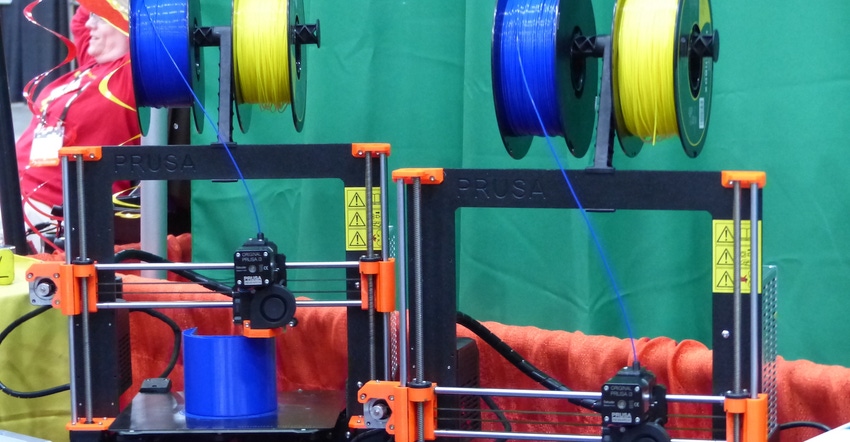3D Printers May Be Toxic for Humans
Study reportedly shows that ABS resin particulates released during 3D printing may be inhaled, causing moderate toxicity in human lung cells.
December 15, 2020

Risk researchers are asking new questions about the health and safety implications of 3D printers and consumers of products manufactured with this technology, notably how to mitigate any potential health risks to users, especially children. Particles released during the printing process, which are small enough to infiltrate deep into the lungs, can affect indoor air quality and public health. The wide use of 3D printers to manufacture face shields, respirators, and other personal protective equipment for COVID-19 has created a new sense of urgency about these questions.
Several studies that aim to characterize and quantify the release and composition, particle size, and residence time in the indoor environment were presented during the Exposure and Risk Assessment of 3D Printing and Emerging Materials symposium on Dec. 15 at the 2020 Society for Risk Analysis Annual Meeting held virtually from Dec. 13 to 17, 2020.
The base materials used in 3D printers include thermoplastics, metals, nanomaterials, polymers, and volatile and semi-volatile organic chemicals. The printing process may take several hours; during this time, a range of chemical by-products and particulates may be released into indoor environments.
Given these unknowns, scientists have begun to conduct studies to understand these releases and their specific composition, particle size, and residence time in the indoor environment, producing data that can be incorporated into robust exposure and risk assessments.
A study conducted by Yong Qian, PhD, of the National Institute for Occupational Safety and Health (NIOSH), evaluated the potential toxicity of acrylonitrile-butadiene-styrene (ABS) emissions generated during 3D printing by examining human lung cells and rats exposed via inhalation. The study, “Acrylonitrile butadiene styrene (ABS) printer emission induced in vitro and in vivo toxicity,” revealed that the emitted particles cause moderate toxicity in human lung cells and minimal toxicity in rats.
Another presentation, “Recent 3D printing emissions research at Environmental Protection Agency (EPA),” reviewed two recent studies from the EPA. The first study analyzed emissions from a 3D-printer filament extruder — a device used to create 3D-printer filaments — in a laboratory setting. The second study used a simulation model to predict the number of particles deposited at specific locations in the respiratory tract, and how that pattern changes for individuals of different ages when using a 3D printer.
“To date, the general public has little awareness of possible exposures to 3D-printer emissions,” states lead author Peter Byrley, PhD, EPA. “A potential societal benefit of this research is to increase public awareness of 3D-printer emissions, and of the possibly higher susceptibility of children.”
The studies found that the filament extruder released quantities of small particles and vapors similar to those found in studies of 3D printers, and the simulation model predicted higher deposition of particle mass per surface area in the pulmonary region for individuals aged nine and younger. Further testing of emission profiles with additional simulation studies to predict inhaled doses are needed.
As 3D printing technologies become more widespread, regulators, manufacturers, and users may need to focus their attention on better managing potential risks.
About the Author(s)
You May Also Like




